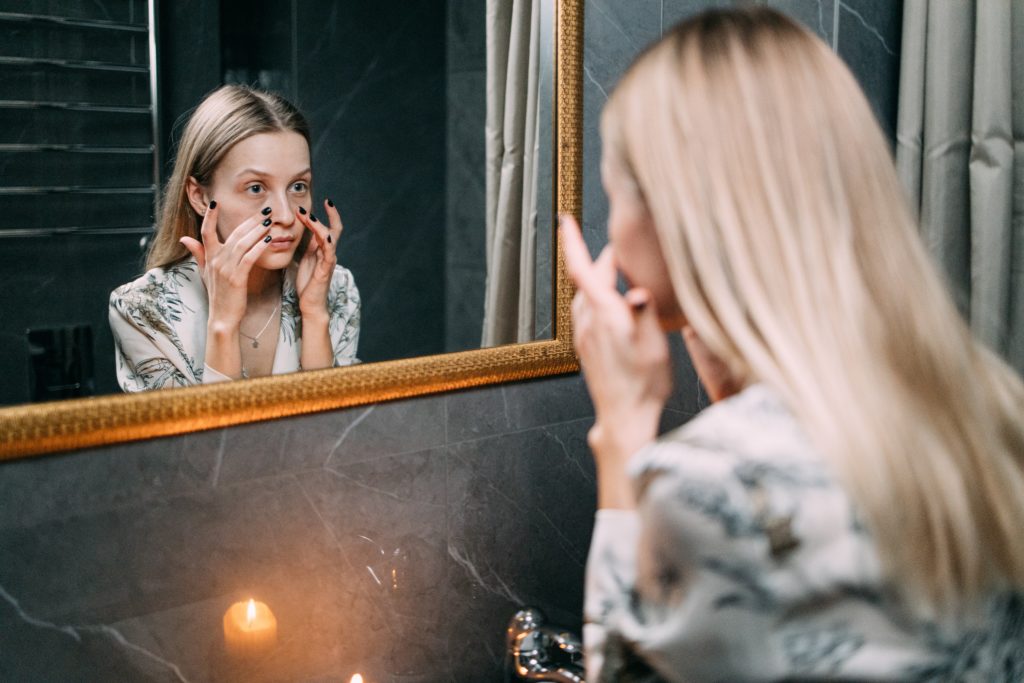In Spanish, reflexive pronouns are used when the subject and object of a verb’s action is the same person. They are used in a few specific circumstances in Spanish.
First and foremost, reflexive pronouns are always used with the reflexive verbs in Spanish. In addition, Spanish reflexive pronouns are used with other verbs when the action is happening to the subject, or even to place extra emphasis on the action.
In this post we’ll look specifically at reflexive pronouns. Spanish uses them all the time! Though we’ll obviously also touch on them here, check out our dedicated post where we go into more detail on Spanish reflexive verbs.
Spanish Reflexive Pronouns: The Basics
Let’s get straight to the point and see the reflexive pronouns Spanish uses:
| Subject pronouns: Spanish | Reflexive pronouns: Spanish | Reflexives: English |
| yo | me | myself |
| tú | te | yourself |
| él, ella, usted | se | himself, herself, itself, yourself |
| nosotros | nos | ourselves |
| ustedes | se | yourselves |
| ellos, ellas | se | themselves |
How to conjugate Spanish verbs with reflexive pronouns
Now that you know the reflexive pronouns in Spanish, it’s time to see how to use them with reflexive verbs (Spanish: verbos reflexivos).
Just remember the fundamental concept that the subject and the object of the reflexive verbs must be the same person, so the conjugation will always match both the subject pronoun and the reflexive pronoun.
Let’s see this in action using the reflexive verb divertirse, meaning to have fun.
- Yo me divierto con mis amigos de la escuela. – I have fun with my school friends.
- Tú te diviertes con tus amigos de la escuela. – You have fun with your school friends.
- Él se divierte con sus amigos de la escuela. – He has fun with his school friends.
- Nosotros nos divertimos con nuestros amigos de la escuela. – We have fun with our school friends.
- Ustedes se divierten con sus amigos de la escuela. – You have fun with your school friends.
- Ellas se divierten con sus amigos de la escuela. – They have fun with their school friends.
Spanish Reflexive Pronouns: Word Order in a Sentence
Reflexive pronouns can be before and after a reflexive verb due to the flexibility of Spanish. What you must take into account is how the sentence is constructed. Let’s see the most typical situations:
Reflexive pronouns: Spanish infinitives
On their own, reflexive verbs in infinitive always have the reflexive pronoun se attached at the end. This is a convenient way to recognize Spanish reflexive verbs! Let’s see a few examples:
- Alistarse – To get ready
- Alegrarse – To be glad, To be happy
- Abrazarse – To hug
Reflexive pronouns: Gerunds
The present continuous tense in English is what you’re familiar with, using the -ing conjugation to form the gerunds. When used with reflexive pronouns, Spanish allows them to be placed either before the verbs, or attached to the end of the gerund. The meaning remains the same:
- We are brushing our teeth. – Nos estamos cepillando los dientes. – Estamos cepillándonos los dientes.
- Leo and his brother are going to get haircuts. – Leo y su hermano se van a cortar el cabello.- Leo y su hermano van a cortarse el cabello.
Spanish reflexive pronouns: Conjugated verbs
As we saw with the examples in the first section, the reflexive pronouns always go before the conjugated verbs. This is the case regardless of the tense.
- I shaved and then took a bath. – Me afeité y luego me bañé.
- The children can dress themselves. – Los niños ya se visten solos.
- Erika is leaving the party because she is bored to death. – Erika se va de la fiesta porque está muerta del aburrimiento.
- I wake up at 6 am and then brush my teeth. – Me despierto a las 6 am y luego me cepillo los dientes.
Spanish reflexive pronouns: Imperatives
The placement of reflexive pronouns differs, depending on whether the imperative is affirmative or in the negative.
When the imperative is affirmative, the Spanish reflexive pronouns are attached to the end of the conjugated verb in imperative.
- It’s late, kids! Brush your teeth and go to bed. – ¡Es tarde, niños! Lávense los dientes y vayan a la cama.
When the imperative is negative, the Spanish reflexive pronoun is placed between the negation word and the verb.
- Please do not leave! The party is about to begin. – ¡No se vayan por favor! La fiesta está por comenzar.
- Don’t take things to heart, relax! – No te tomes las cosas a pecho, ¡relájate!
All the personal pronouns in Spanish
We’ve already covered all the fundamentals with respect to the Spanish reflexive pronouns. Nonetheless, we’ll add one more table here to help you keep the reflexive pronouns clear in comparison to the other Spanish personal pronouns. Click on the links for detailed posts explaining each of them.
| Subject pronouns, Spanish | Direct object pronouns, Spanish | Indirect object pronouns, Spanish | Reflexive pronouns, Spanish |
| yo | me | me | me |
| tú | te | te | te |
| él, ella, usted | lo, la | le | se |
| nosotros | nos | nos | nos |
| ustedes | los, las | les | se |
| ellos, ellas | los, las | les | se |
Conclusion
As we’ve seen in this post on reflexive pronouns, Spanish uses them a lot and in a variety of circumstances. You’re now familiar with all of the Spanish reflexive pronouns themselves, as well as how to use them within various sentence structures. And last but not least, you’re able to differentiate between the reflexive pronouns and the other personal pronouns in Spanish.




